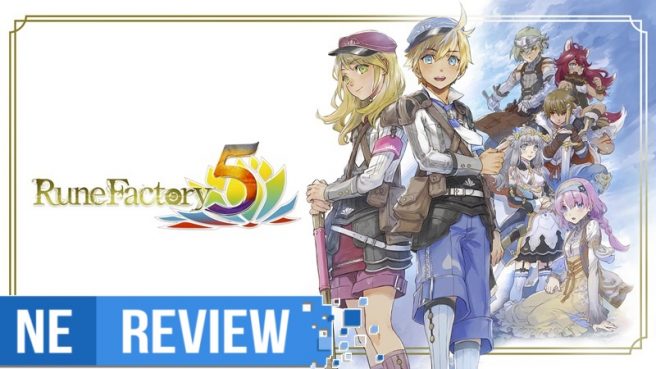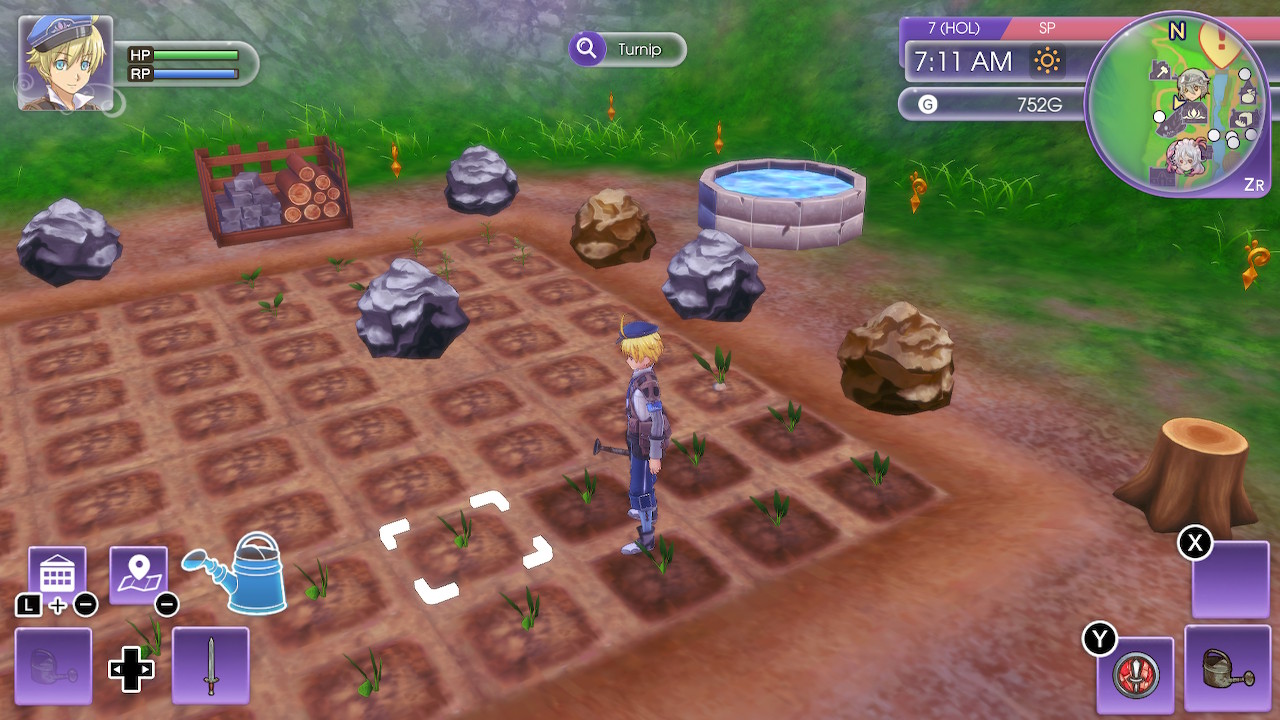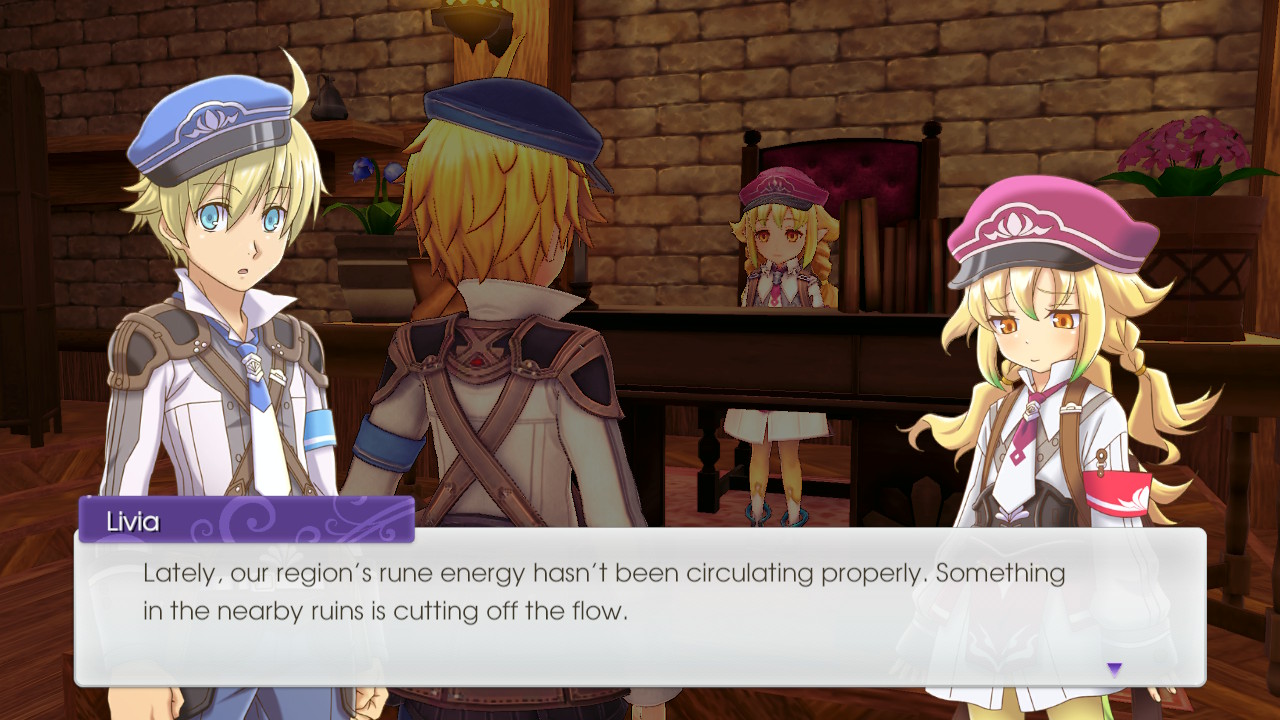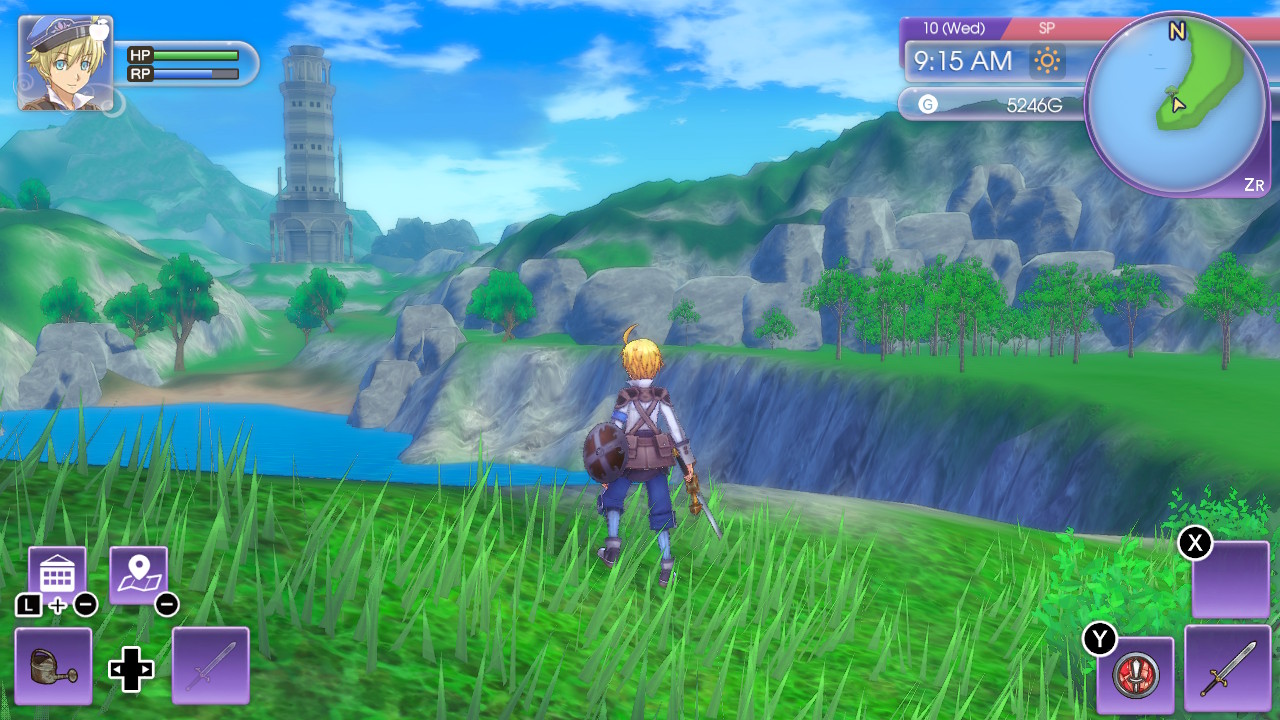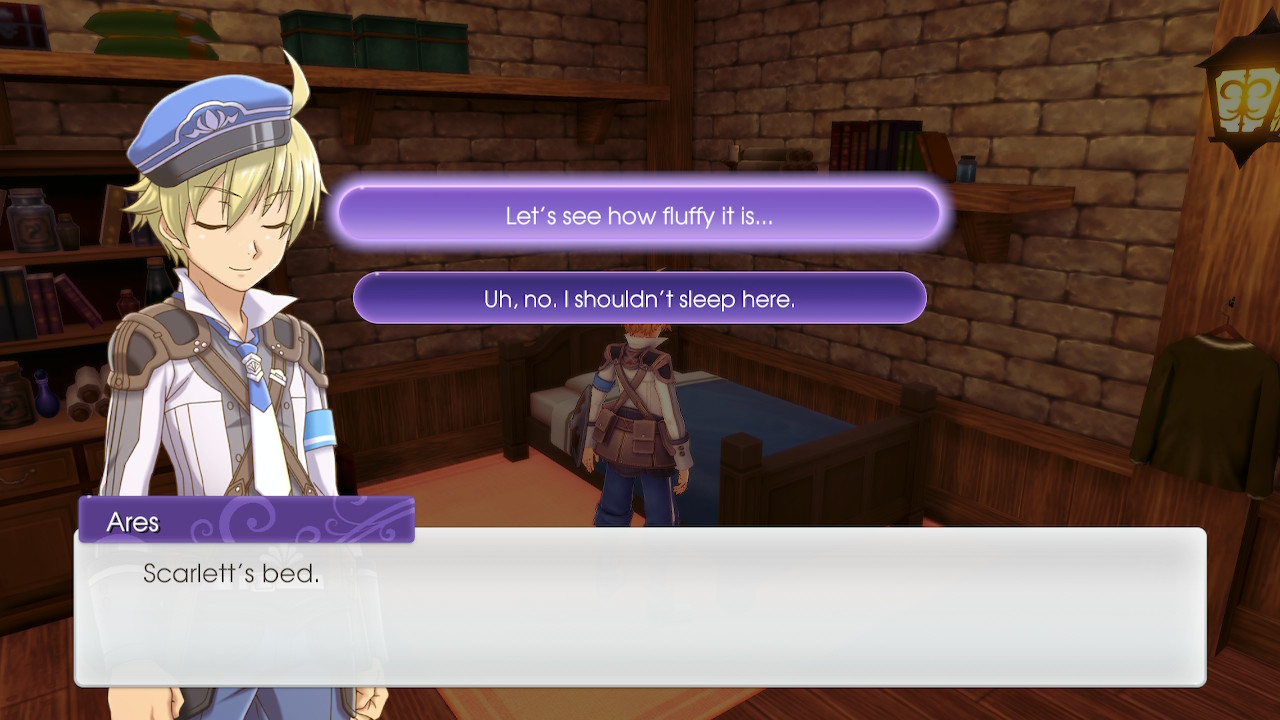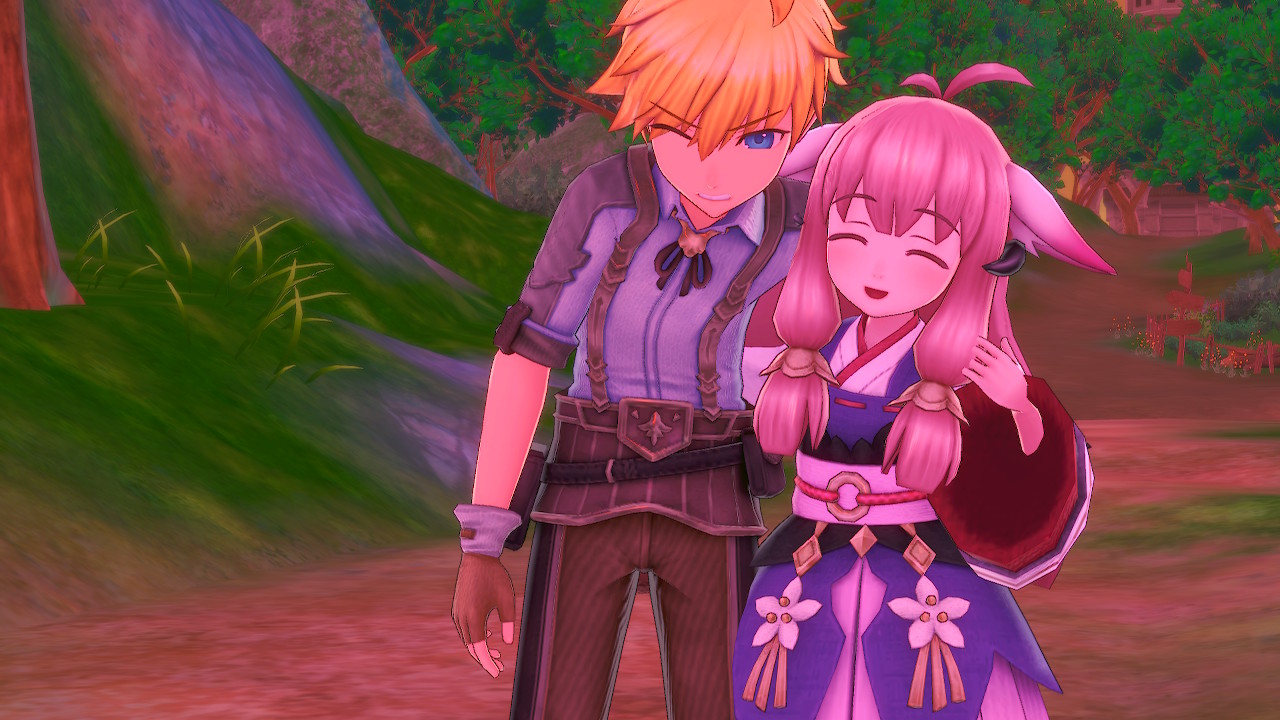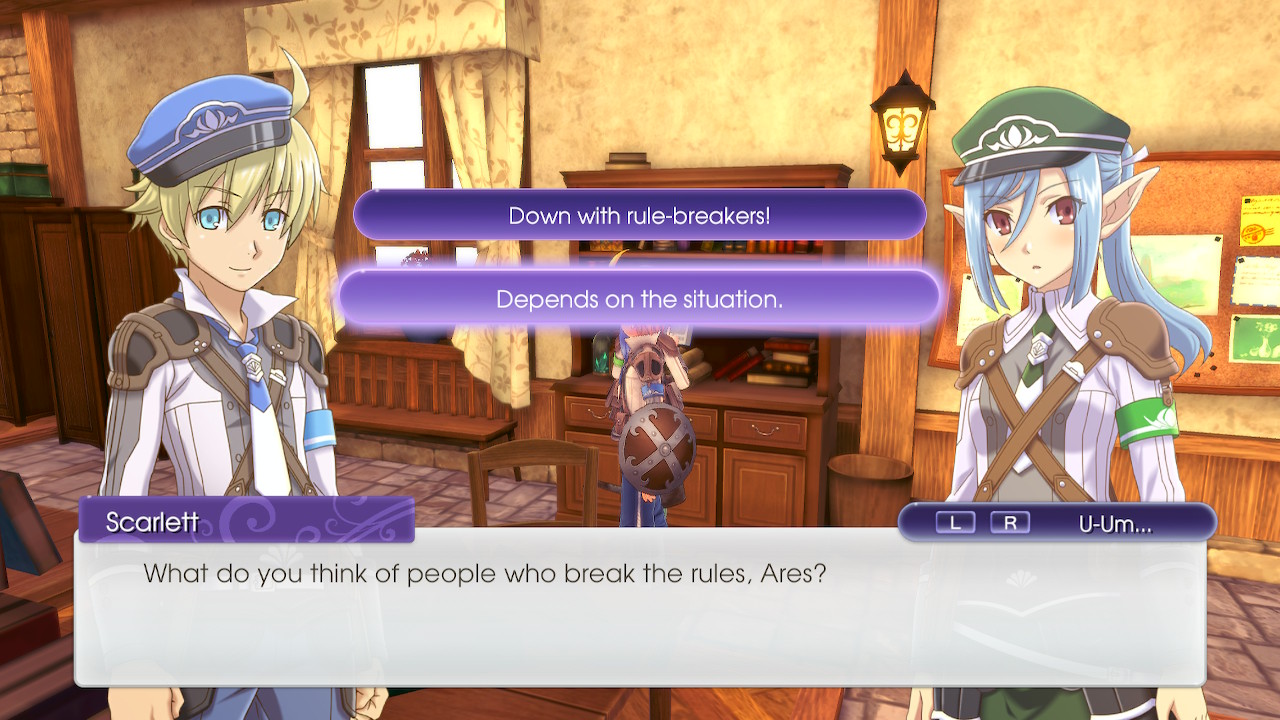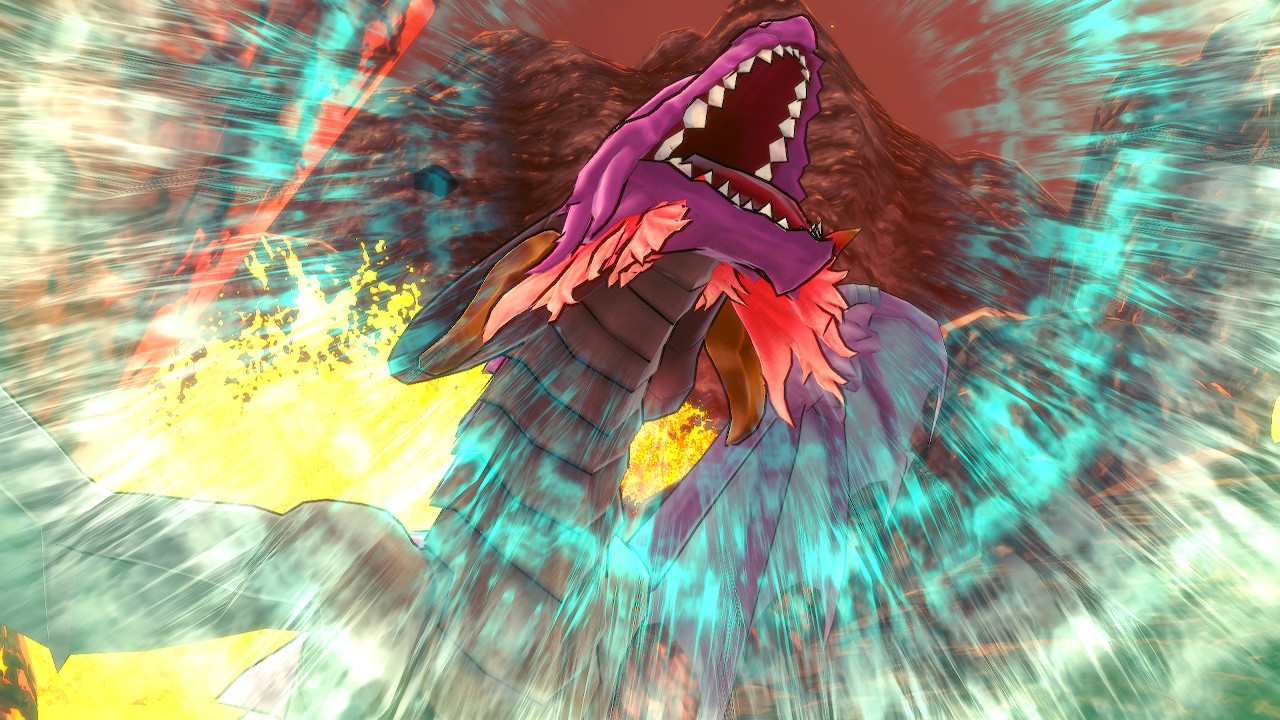[Review] Rune Factory 5
System: Switch
Release date: March 22, 2022
Developer: Hakama
Publisher: XSEED Games / Marvelous
The producer of the Rune Factory franchise, Yoshifumi Hashimoto, once summarized the games as “Harvest Moon where you wield a sword.” And while that’s technically true, it’s a bit reductive; not content in being merely another set of farming-focused slice of life experiences, the Rune Factory games lean deeper into the “role-playing” aspects of their fantasy settings, giving you more room to explore, fight, craft and shape your experience to your liking then Harvest Moon ever has. Rune Factory 5 is the first 3D entry in the franchise since 2011’s Tides of Destiny, and thus feels primed to capture the attention of more new fans than ever before. While this new entry may lack the overall polish in its mechanics and presentation that it deserves, Rune Factory 5 is still an overall rewarding experience full of charm that I thoroughly enjoyed.
Rune Factory 5 takes place primarily in and around Rigbarth, a quaint farming village nestled between the mountains and the sea. You play as either Ares or Alice, who – surprise – awakens on the outskirts of town with a serious case of amnesia. I chose Ares for my playthrough, and it’s not long before our hero finds himself being brought into town and questioned by its residents, who are as uncertain about him and his motives as he is. Lacking any clear goals and needing to prove himself, Ares is volun-told to join SEED, a government organization with a division in Rigbarth that is tasked with supporting and protecting the town and its inhabitants.
What follows this somewhat simple opening act is a relatively freeform experience that offers a surprisingly engaging main questline that you can experience at your own pace. While the plot of Rune Factory is fairly straightforward – the magical rune resources that support Rigbarth have been disappearing, and it’s up to you to get to the bottom of it – there were a few twists in the story that managed to surprise me and keep me interested. That said, once you’ve passed through the introduction of the game, there’s no real urgency to rush through the story if you don’t want to. Rune Factory 5 is so dense with things to do that there’s a good chance many players will set the story aside so they can enjoy some of the game’s more leisurely pursuits. That could be farming, or fishing, or hunting down monsters in the open fields around the borders of town. You could spend a ton of time collecting ingredients to craft progressively stronger weapons and potions, or you could focus your energy on getting to know the residents of Rigbarth and maybe even find your hero a potential love interest.
How you spend your time in Rune Factory 5 is largely dictated by how much you can accomplish per in-game day, with each one taking about an hour to go through in real-life time. Unlike Animal Crossing which mirrors a true-to-life calendar, the calendar in Rune Factory 5 consists of four in-game months, with each month representing a different season, so the game progresses at a pretty fast pace. Also unlike Animal Crossing, it’s not possible to just fish or farm all day without consequence – your protagonist has a limited amount of energy called Rune Points, which is used up when doing any kind of physical action (other than walking) or using magic. There are ways to replenish it – you can take a soak in Rigbarth’s bath house, for example, or eat certain types of food – but sometimes the best option is to send Ares to bed for the evening so he can wake up refreshed and recharged for the next day. You can also generally only accomplish one story mission and one major side-mission per in game day, so this keeps the game’s pace moving at a reasonable speed while encouraging the player to pace themselves and enjoy all the game has to offer.
My favorite part of my time spent with Rune Factory 5 was talking with and doing favors for its large and diverse cast of characters. From a ditzy pink-haired wolf girl to a gruff but kind-hearted ironworker, everyone who lives and works in Rigbarth is unique and memorable. And while many of them do have aspects of their personalities that can occasionally lean into trope territory, more often than not I found myself surprised at the ways in which these characters develop across the story. Completing side missions was never a drag, because most of them fleshed out interesting details about Rigbarth’s residents that made it easier to care about them and how they viewed Ares. They all feel like real people, which is a credit to both the excellent writing and the voice acting, although I wish there was a bit more of the latter – not even major story sequences are fully voice acted, which can be a bit jarring at times.
As in real life, it takes time to get to know everyone in town and will take even longer to get a character to fall for Ares and Alice romantically. All the residents of Rigbarth have their own daily routine of sorts, sometimes working in the shops or restaurants during the day and generally doing their own thing, so you have to seek them out on your own if you want to get to know them (sometimes you will see them literally sprinting from place to place – I guess everyone is late from time to time!) Each major character has a “relationship meter” of sorts that monitors how close you are with them; you can raise this by talking with them regularly, doing them favors and giving them gifts. The closer you are with them, the greater the chances are that they’ll agree to join your party when venturing out into combat or join you in activities like tag-team fishing.
If you really get to know someone, you can even invite them on dates and eventually ask them to marry you. New to the western localization (though it was patched in the Japanese version after launch) is the ability to pursue a same-sex romance if you so choose, meaning that there are a dozen potential bachelors and bachelorettes for you to try and find a romantic partner from, if you want. I’m currently trying to set up Ares with Scarlett, a confident and moderately snarky SEED ranger who seems like exactly his type, but it certainly seems like it will take some time to get them interested in each other. (Don’t worry, I’m sure they’ll invite you all the wedding – er, if it happens.)
I also generally found myself enjoying the combat and exploration elements in Rune Factory 5, even if Ares is a bit clunky to control. Most of the game’s story-driven quests will take you into the regions surrounding Rigbarth, which are best described as semi-open field environments filled with monsters to fight, resources to harvest and hidden treasure chests to locate. All the basic types of ecosystems are represented here – you’ve got your ice region, your grassy field region, your volcanic hellscape region, et cetera – and while they’re not massive in scope, most of them are big enough that it will take a few visits to thoroughly explore them. They’re certainly more interesting than Rigbarth itself, which I found to be disappointingly static and sparce of interesting things to engage with. Most of the buildings in town are shops that all sell different types of items, but I generally didn’t need to visit them very often (for reasons I’ll explain later in this review), so that leaves surprisingly little to see and do in the town proper. It’s also not particularly interesting to me from an aesthetic perspective, rarely venturing beyond generic fantasy RPG design. It’s not bad persay, just bland – this wouldn’t be an issue in other games, but because Rune Factory 5 tries to make Rigbarth a character in of itself, it does feel like there’s some missed potential here. This led to me spending more time out exploring the wilds than I otherwise might have.
Combat takes place in real-time, and is relatively simple to control, but reveals its potential for depth more and more as the game progresses. Ares can equip a range of different weapon types, including swords, spears, hammers and more, and each one handles differently. I feel like the dual blades are perhaps the best balance out of all the weapon classes, as these allow you to strike your foes with both speed and power, while also giving you the agility to quickly dash out of the way to avoid oncoming attacks. Dodging is crucial in Rune Factory 5 – playing on normal difficulty, enemies are great enough in number that it’s easy to find yourself surrounded relatively quickly, and Ares can only take a couple of hits before passing out and getting sent back to Rigbarth’s clinic (where he’ll be met with increasingly expensive medical bills). It’s also possible to find yourself face-to-face with enemies who are of significantly higher level than you if you’re not careful.
Fortunately, Ares has a couple of tricks up his sleeves to help create an advantage. The first are Rune Abilities, which are various types of magic that consume Rune Points. These can vary from casting fireballs towards enemies from a distance to strike their elemental weaknesses, to creating a protective magical barrier that damages any enemies who get too close. These Rune Abilities can be found hidden throughout the world and can be swapped during combat by pausing the game, so it’s possible to create some pretty devastating combinations as more of these abilities are unlocked. The other advantage Ares has is his ability to capture monsters he has weakened (but not killed) during combat, at which point they will temporarily join his party and fight alongside him. Not every monster can be recruited, but those who can generally are more useful than not to have in combat – although, if they go down in battle, you’ll have to share some of your precious healing resources with them if you want them to continue assisting you. You can even take these monsters back with you to Rigbarth and store them in a barn if you wish to keep them accessible to you for later battles.
All of this combined gave me what felt like just enough options to keep combat dynamic and interesting over the course of the game. Ultimately it all boils down to hitting the right buttons at the right time – most enemies can dispatched simply by hitting attack and dodging, if you so choose – but venturing deeper into these combat options made me fore confident in my abilities to take on some of the games tougher foes. And abilities will certainly be tested – many major story quests often end in some form of dungeon, in which limited save points, high enemy counts and reasonably challenging bosses all threaten to undo your progress. If you play a lot of games I doubt it will ever feel overwhelming, but more casual players might be initially surprised by the pace at which difficulty can ramp up.
Unfortunately, beyond combat, I do have some issues with how Rune Factory 5 intertwines and organizes the rest of its mechanics. Sometimes, I think this game attempts to do a little too much for the sake of seeming more dense and complicated than it all actually is, and often in ways that are poorly telegraphed to the player. This ended up slowing down my in-game progress for what often felt like frustratingly arbitrary reasons, rather than for the sake of adding real nuance and depth to the game.
For example, to properly prepare for combat, it’s all but required to enter the fray properly prepared with plenty of potions, cooked food, and weapons and armor that are high-enough in quality for you to take on. Rune Factory 5 encourages the player to craft these items on their own as much as possible – shops have limited and generally low-level inventory, and its’s all pricey, so crafting is presented early on as the best option. To actually do this, though, not only do you need separate crafting tables for each type of item, you also need to obtain licenses to be able to use them. Once you have those, you’ll also need crafting recipes – these are sometimes given to you, but generally need to be obtained by eating recipe bread, which can only be bought in limited quantities. Also, each type of item has its own type of recipe bread, so you must decide on any given day which type of item you most need to learn new recipes for. But get this – even if you eat recipe bread, it might not teach you any new recipes if your crafting level for that recipe isn’t high enough. So, how do you raise your crafting level? By crafting multiple quantities of all the previously unlocked craftable items, of course – but also, sometimes by meeting some other vague or unexplained requirement. Confused yet? I certainly was.
The game, to its credit, at least attempts to communicate this to the player through early quests, not only are these mechanics not particularly well-explained, it’s all just unnecessarily tedious. Why should I have to do half-a-dozen obtuse steps to learn how to craft something useful when in other games its as simple as “Step one; find recipe” and “Step two: craft item”? It partially feels like a way to justify the existence of certain characters – it makes more sense to have a baker and her husband live in Rigbarth when the game gives them something to sell you, even if the only purpose of that item is to slow the speed at which you can craft anything useful.
Most of what you are unable to craft in Rune Factory 5 can be bought at the game’s shops – this mostly includes furniture, seeds, and a handful of consumables. I think the economy needs some rebalancing as a whole; prices can seem high in the early game when money is harder to earn, but in the later portions of the game the opposite is true – you’ll be so awash in high-level weapons and potions that visiting shops becomes basically unnecessary. Annoyingly, during the portions of the game where visiting shops is most useful, you’ll have to make about half a dozen stops to different stores as each building generally only sells one or two types of items. The only reason I can fathom why this choice was made was to give each of Rigbarth’s residents a job, and to fill out the town a little bit, but I would have preferred to see shops consolidated to make room for something more interesting.
Considering how much stuff Ares will be picking up throughout his journey, I thought Rune Factory 5 did a great job at making it easy to sort and manage your inventory, giving you multiple places to store things and providing different ways to filter and find what you’re looking for. I also loved how it clearly states the purchase price and sale value of each item at all times, making it so much simpler to decide what should be kept and what could be sold. That said, one type of item the game really fails to handle well is furniture. As far as I could tell there’s really no way to store it, which means you must physically carry objects around the environment if you want to move them somewhere else, which just feels clunky and strange from a design perspective. It is also incredibly difficult to accurately place and move furniture – Ares has to place everything manually, which means you need to fight the game’s incredibly sensitive controls to get your cooking table or wardrobe even close to where you actually want it to go. Also, not only can some items not be moved at all, but it’s basically impossible to place objects near anything else, so most of the furniture in your home will be weirdly placed two or three feet away from the walls. It all just feels clunky and poorly thought out.
When so many items can be crafted or found, having a ton of money isn’t essential during Rune Factory 5, even less so as the game progresses – but when I did need it, I would usually set aside an in-game day or two to scavenge for resources to sell, catch fish or farm. Fishing generally felt like the easiest way to make money, and was generally pretty fun to do, especially once I had figured out how and when was best to do it. Farming, though, is a much bigger component of Rune Factory 5 – it’s one of the first mechanics the game introduces you to, and a huge chunk of the optional tasks you can take on from the Requests Board posted outside your base of operations are farming related. It’s fairly simple – clear the field of any debris, till it with a hoe, plant your seeds, water them daily, then wait. But as with combat, there’s some depth here too for those that want it. For example, if you want to grow higher-level crops that are necessary to craft certain useful items, you’ll also need to be judicious about keeping your fields well fertilized by recycling dead grass and weeds. You also might want to occasionally invest in some special items to help increase the vitality of your fields.
Frankly, I found the farming mostly tedious and uninteresting – I know plenty of folks enjoy the simple repetition of it, but I am not one of those people. Farming is an important part of the Rune Factory 5 experience, as you’ll need the vegetables you grow to prepare food dishes to keep you alive in battle, so it’s not really possible to avoid it entirely. That said, if you get adept enough at crafting high-level potions, or cooking fish-based dishes, or maybe even unlocking Rune Abilities that heal you and your party, I could see it eventually being feasible to try and ignore the mechanic if so desired. Don’t get me wrong – I don’t think there’s anything wrong with how farming is executed in Rune Factory 5, but with so many other interesting activities packed into the game, I leaned towards doing those instead.
Visually, Rune Factory 5 is certainly a vibrant game at times, especially on the OLED model of the Switch – it’s definitely one of the most colorful RPGs I’ve seen on the platform in some time. I also really enjoyed the high quality of the 2D character art, which is all vividly detailed and expressive for a game of this scope. That said, overall, Rune Factory 5 is a visually dated game. Textures on buildings and landscape elements are generally lacking in detail, with the main exception being in-game foliage and interior decorations, which looked pretty good overall. Still, this low level of detail combined with stiffly animated character models, flat lighting and low-quality environmental effects gives the game the visual prowess of an early PS3-era game.
That can be okay – the overall aesthetic and mood is more important in a game like this than sheer graphical prowess, I’d argue – but considering the visuals the game is outputting, there’s really no excuse for the state of the game’s lackluster technical performance. Low frame rates were a BIG issue when the game first launched in Japan, and the pre-release build I was playing had a hard time hitting a consistent 30 frames-per-second for much of the review period. Fortunately, it’s more stable now thanks to a patch – not perfect, still tending to drop when running through dense environments, but good enough that players who pick up the game on launch should have a sufficiently playable experience. The game also employs dynamic resolution scaling, and at times I noticed the game would get blurrier in order to reach an acceptable frame rate. This was a bit more distracting to me, but casual players probably won’t be as bothered.
I also quickly grew tired of Rune Factory 5’s music. It’s fine overall, if not a bit generic and uninspired, but the big issue is that most environments in game only have a single music track attached to them – which means you will hear the same handful of songs play over and over again. Eventually, it just became noise to me, and I was kind of able to tune it out, but that’s hardly what you want to hear when talking about the soundtrack to a game that could take you well over 70 hours to see through to the end.
Ultimately, though, these issues weren’t enough to detract from my enjoyment of Rune Factory 5 as a complete package. Sure, I wish there was more polish across the board in the presentation department, and I wish more attention had been paid to the overall balance and design of some of the game’s mechanics. But it was easy for me to forget about a lot of this in my moment-to-moment experience of actually playing the game, simply because this is a title filled with so much charm and passion that it became contagious. The way characters interact with each other, the quaint comfort of the setting, the way the game indulges some of the simple pleasures of a life in the countryside… it all contributes to a mood that isn’t particularly common in major releases these days. I always felt like I was playing something special when I was playing Rune Factory 5, which isn’t something that I can say about every game.
The Verdict
Rune Factory 5 is a bit rough around the edges, and some of its mechanics feel a little unbalanced at times, but this game does a great job at creating a world with characters that I cared about and genuinely wanted to get to know. Its combination of engaging adventuring and relaxing resource-gathering is executed better here than in many of its peers of the genre, and the more I sought out to learn the rules and systems of Rigbarth, the more I enjoyed my experience. Rune Factory 5 requires patience to appreciate, but those who can look past its flaws will find a rewarding, heart-warming slice-of-life RPG that will slowly and steadily hook a fishing line into your free time.
Rune Factory 5 copy provided by the publisher for the purposes of this review.
